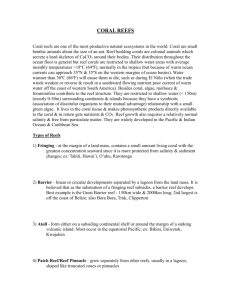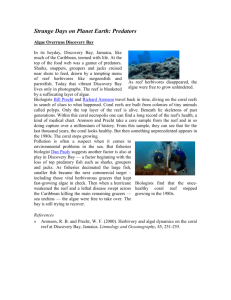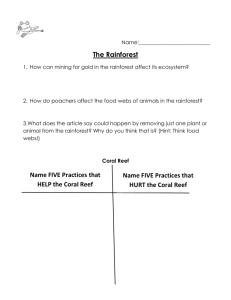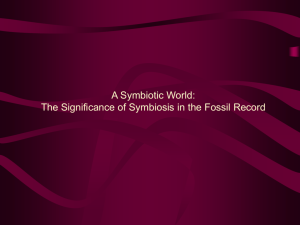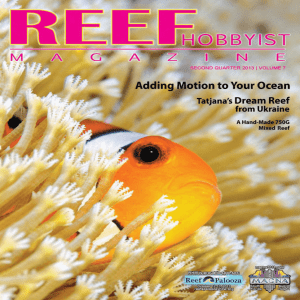Analysing field data - North Keppel Island Environmental Education
advertisement
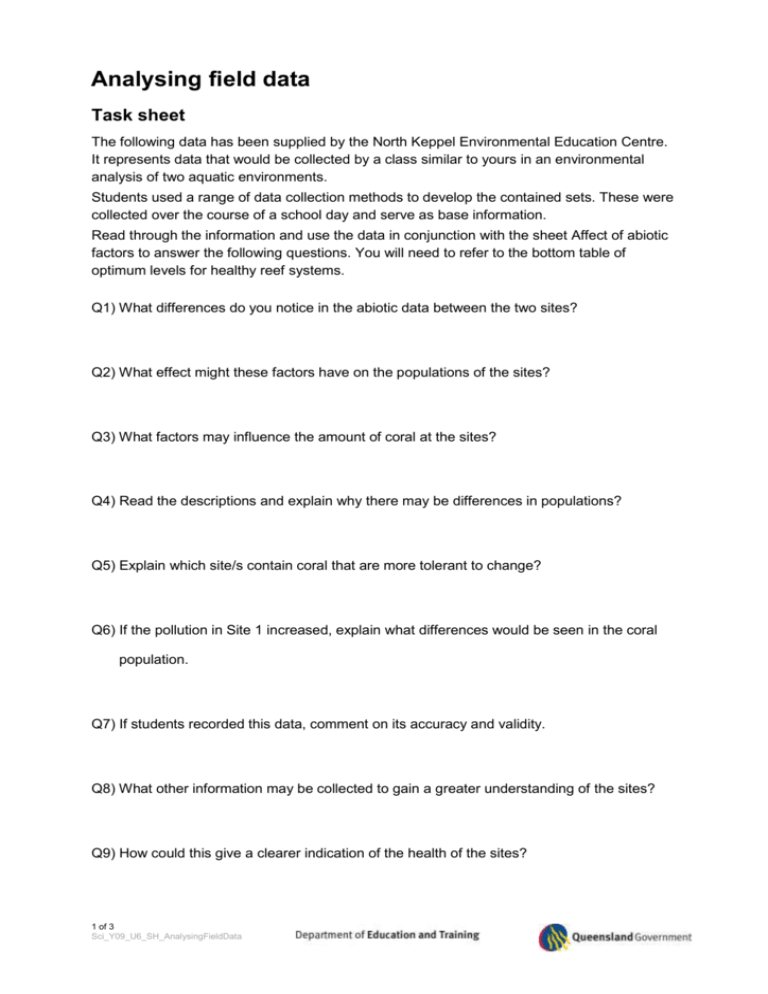
Analysing field data Task sheet The following data has been supplied by the North Keppel Environmental Education Centre. It represents data that would be collected by a class similar to yours in an environmental analysis of two aquatic environments. Students used a range of data collection methods to develop the contained sets. These were collected over the course of a school day and serve as base information. Read through the information and use the data in conjunction with the sheet Affect of abiotic factors to answer the following questions. You will need to refer to the bottom table of optimum levels for healthy reef systems. Q1) What differences do you notice in the abiotic data between the two sites? Q2) What effect might these factors have on the populations of the sites? Q3) What factors may influence the amount of coral at the sites? Q4) Read the descriptions and explain why there may be differences in populations? Q5) Explain which site/s contain coral that are more tolerant to change? Q6) If the pollution in Site 1 increased, explain what differences would be seen in the coral population. Q7) If students recorded this data, comment on its accuracy and validity. Q8) What other information may be collected to gain a greater understanding of the sites? Q9) How could this give a clearer indication of the health of the sites? 1 of 3 Sci_Y09_U6_SH_AnalysingFieldData Site 1 – Front Reef (The front reef is a reef flat.There is a dominance of algae over the reef. Sargasm grows tall here and blocks sunlight. The current past the reef is low and the depth is shallow. It has an easterly aspect. During flood, sediment is often deposited on the reef. The reef is healthier towards the outside edge. There are a number of isolated bombies that are relatively healthy in the deeper water. There are a number of soft corals. Most of the time there is minimal wave action. The front reef is a Green Zone and has been for a number of years) Factor Phosphorous Nitrogen Dissolved Oxygen pH Salinity Depth Hard Coral Cover (live) Algae Cover Fish population Measurement 7 u g/L 7 u g/L 6 u g/L 9 30 g/L <5m < 20% >70% Low Site 2 – Sloping Island (Sloping Island is a shelving reef. There is a dominance of hard coral here. Some algae has started to take hold. It has a Northerly aspect. Current flow is high here. The depth of water is deeper here. Wave action is greater as well. Coral health is noticeably better as the depth increases. There is a higher biodiversity here. There are more hard corals then soft corals at the site. Sloping Reef is a blue zone and experiences some fishing pressure. Anchor damage is common) Factor Phosphorous Nitrogen Dissolved Oxygen pH Salinity Depth Hard Coral Cover (Live) Algae Cover Fish Population 2 of 3 Sci_Y09_U6_SH_AnalysingFieldData Measurement 5 u g/L 7 u g/L 8 u g/L 7 35 g/L >6m 70% Low Medium Optimum Levels for Healthy Coral Reefs Factor Measurement Phosphorous 3 u g/L Nitrogen 7 u g/L Dissolved Oxygen 8 u g/L pH 7.5 Salinity 34-35 g/L Depth >5m Hard Coral Cover (Live) >70 % Algae Cover Low Fish Population High 3 of 3 Sci_Y09_U6_SH_AnalysingFieldData



